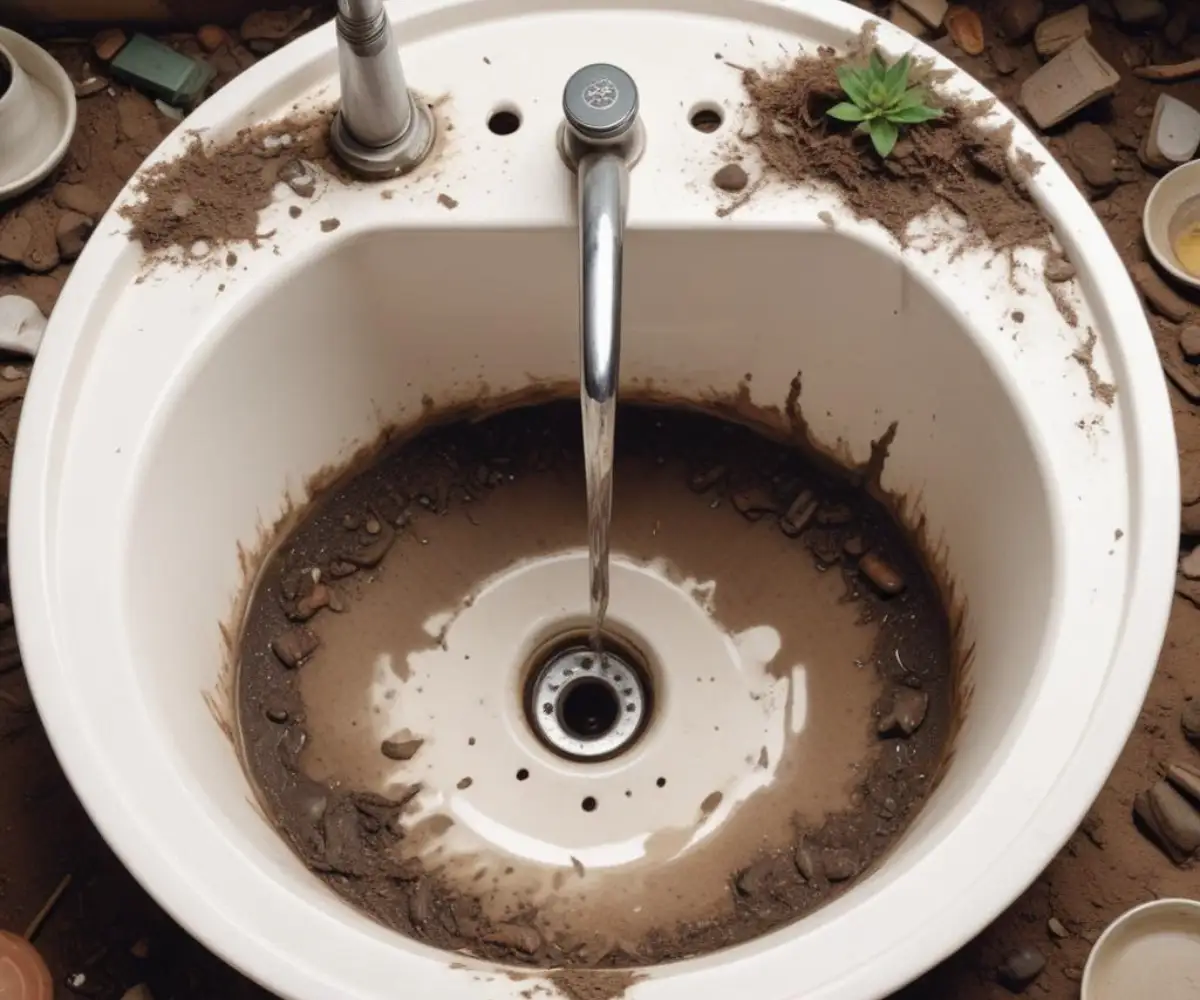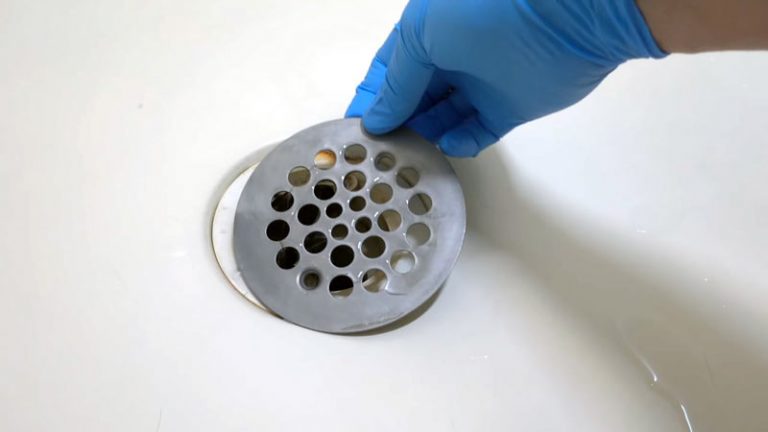Potting Soil Clogged Your Drain? Here’s the Fix You Need
You’ve just finished repotting your favorite houseplants, giving them fresh soil and a new home. But in the process of cleaning up, a seemingly harmless amount of potting soil washes down the sink or shower drain. Now, you’re facing a much bigger problem: a slow-draining or completely blocked pipe. It’s a surprisingly common issue that can escalate from a minor annoyance to a major plumbing emergency if not handled correctly.
Washing soil down the drain seems like a quick cleanup solution, but it’s one of the worst things you can do for your plumbing. Unlike organic matter that might eventually break down, potting soil is dense and composed of solid particles. When mixed with water in the confined space of a pipe, it creates a thick, heavy sludge that is incredibly effective at causing stubborn blockages.
You'll Learn About
Why Potting Soil is a Plumbing Nightmare
Potting soil is specifically designed to retain moisture for plants, a quality that makes it disastrous for your drains. It’s a mixture of peat, compost, sand, and other materials that don’t dissolve. When this mixture enters your pipes, it doesn’t just flow through; it settles, compacts, and combines with other debris like hair, soap scum, and grease to form a cement-like obstruction.
This dense composition is the primary reason why standard liquid drain cleaners often fail to resolve the issue. The chemicals may burn a small channel through the clog but are typically ineffective at dissolving the heavy, compacted soil. This can leave you with a recurring problem and the false impression that the clog is gone.
The Anatomy of a Soil Clog: More Than Just Dirt
A potting soil clog isn’t just loose dirt. Inside your pipes, it becomes a layered problem. The heavier sand and soil particles settle at the bottom of the pipe, particularly in the P-trap (the U-shaped bend under your sink), creating a dense base. Lighter materials like peat and compost mix with water and other waste, forming a thick slurry on top.
This combination is what makes these clogs so formidable. The initial blockage traps more and more debris over time, worsening the situation with each use of the drain. In severe cases, this can put significant strain on your pipes, potentially leading to leaks or even burst pipes if the pressure becomes too great.
Moreover, the organic components in potting soil, like compost, can start to decompose within the drain. This can lead to unpleasant odors emanating from your sink or shower, similar to when your garage smells like rotten eggs, often indicating a plumbing or gas issue. This smell is a clear sign that organic material is trapped and decaying in your pipes.
Immediate Steps to Take for a Potting Soil Clog
If you suspect a potting soil clog, the first step is to stop running water down the affected drain immediately. Adding more water will only increase the pressure and potentially cause a messy backup into your sink, tub, or shower. Once you’ve stopped the water, you can assess the severity of the clog and decide on the best course of action.
For a minor, slow-draining issue, you might be able to resolve it with some simple DIY methods. However, for a complete blockage, more direct mechanical intervention is usually necessary. It’s crucial to approach the problem methodically to avoid making it worse.

DIY Solutions: What Works and What Doesn’t
Before calling a plumber, there are several methods you can try to clear the clog yourself. It’s important to understand the limitations of each technique, as what works for a hair clog might be useless against dense soil.
Start with the simplest and least invasive methods first. Boiling water can sometimes help to loosen minor clogs by breaking down any grease or soap scum that is binding the soil particles together. Pour a large pot of boiling water slowly down the drain in stages. However, be cautious with this method if you have PVC pipes, as extremely hot water can sometimes soften the plastic.
Manual Removal: The Most Effective First Line of Defense
For soil clogs, manual removal is almost always the most effective approach. This involves physically breaking up and extracting the blockage. Your two primary tools for this are a plunger and a drain snake (also known as a plumber’s auger).
A plunger works by creating pressure to dislodge the clog. For sinks, ensure you cover the overflow hole with a wet rag to create a proper seal. For a bathtub, you’ll need to do the same for its overflow drain. If plunging doesn’t work after several attempts, it’s time to move on to a drain snake. A drain snake is a long, flexible tool that you feed into the pipe until you reach the clog. By turning the handle, you can either break up the obstruction or hook onto it to pull it out.
If the clog is in a sink, the blockage is most likely in the P-trap. Placing a bucket underneath and carefully unscrewing the trap allows you to manually clean it out. This is often the quickest way to resolve a sink clog caused by soil.
Advanced Solutions for Stubborn Clogs
If DIY methods fail, the clog is likely further down the line or too compacted for manual tools to be effective. At this point, you may need to consider more powerful options or call in a professional. It’s important to know when to stop to avoid damaging your pipes.
Chemical drain cleaners are generally not recommended for soil clogs. They are often ineffective and the harsh chemicals can be harmful to your pipes and the environment. If you do choose to use one, opt for an enzymatic cleaner, which uses bacteria to break down organic matter, although this process can be slow.
When to Call a Professional Plumber
If you’ve tried everything and the drain is still clogged, it’s time to call a professional. A plumber has access to tools like powerful motorized augers and hydro-jetting equipment that can clear even the most stubborn blockages safely and effectively. Hydro-jetting, in particular, uses high-pressure water to scour the inside of the pipes, removing the entire clog and any residual buildup.
Ignoring a persistent clog can lead to more severe plumbing issues. Much like how a small dip at the end of a driveway can worsen over time due to water erosion, a soil clog can cause ongoing damage to your plumbing system. The constant pressure and potential for leaks can compromise the integrity of your pipes.
| Method | Effectiveness on Soil Clogs | Risk Level | Best For |
|---|---|---|---|
| Boiling Water | Low | Low (use caution with PVC) | Very minor, slow drains where grease might be a factor. |
| Chemical Drain Cleaners | Very Low | High (can damage pipes) | Not recommended for soil clogs. |
| Baking Soda & Vinegar | Low | Very Low | Regular maintenance and very minor organic clogs. |
| Plunger | Medium | Low | Initial attempts to dislodge the clog through pressure. |
| Drain Snake / Auger | High | Medium (can scratch pipes if used improperly) | Physically breaking up or removing the blockage. |
| Cleaning the P-Trap | Very High | Medium (requires basic plumbing knowledge) | Sink clogs where the blockage is localized. |
| Hydro-Jetting (Professional) | Very High | Low (when done by a pro) | Severe, stubborn clogs deep within the plumbing system. |
Preventing Future Potting Soil Clogs
The best way to deal with a potting soil clog is to prevent it from happening in the first place. Adopting good habits when gardening indoors can save you a lot of time, money, and frustration. Prevention is key to maintaining a healthy plumbing system.
Simple changes to your repotting routine can make a huge difference. The primary goal is to keep soil and other debris out of your drains entirely. This might seem inconvenient at first, but it’s far less trouble than dealing with a major clog.
Smart Repotting and Cleanup Habits
Always repot plants outside or over a protected surface like a tarp or newspaper. This contains the mess and makes cleanup much easier. You can simply fold up the newspaper or tarp and pour the excess soil back into the bag or into your garden.
When washing pots or tools, use a bucket or do it outside with a hose. If you must wash them indoors, use a drain cover or mesh screen to catch any soil and debris. Scrape as much soil as possible into the trash or compost bin before washing.
For cleaning up spilled soil on floors or counters, sweep or vacuum it up instead of wiping it into the sink. These small adjustments to your routine are the most effective way to prevent soil from ever entering your plumbing system.
Proper Disposal of Old Potting Soil
Instead of washing old soil down the drain, there are several environmentally friendly ways to dispose of it. You can add it to your compost pile, where it will break down and enrich the final compost. You can also spread it over your lawn or in existing garden beds to improve the soil structure.
If you don’t have a garden or compost pile, check with your local municipality about yard waste disposal programs. Many communities have drop-off locations for soil and other green waste. This is a far better alternative than sending it to a landfill or down your drains.
Properly managing your home’s exterior drainage is also important. Issues like a large gap between your patio and house can lead to soil erosion and drainage problems around your foundation, highlighting the importance of managing soil and water flow both inside and outside your home.
By being mindful of what goes down your drains and adopting preventative measures, you can enjoy your indoor gardening hobby without the worry of creating a costly and inconvenient plumbing problem. A little foresight goes a long way in keeping your pipes clear and your home running smoothly.

